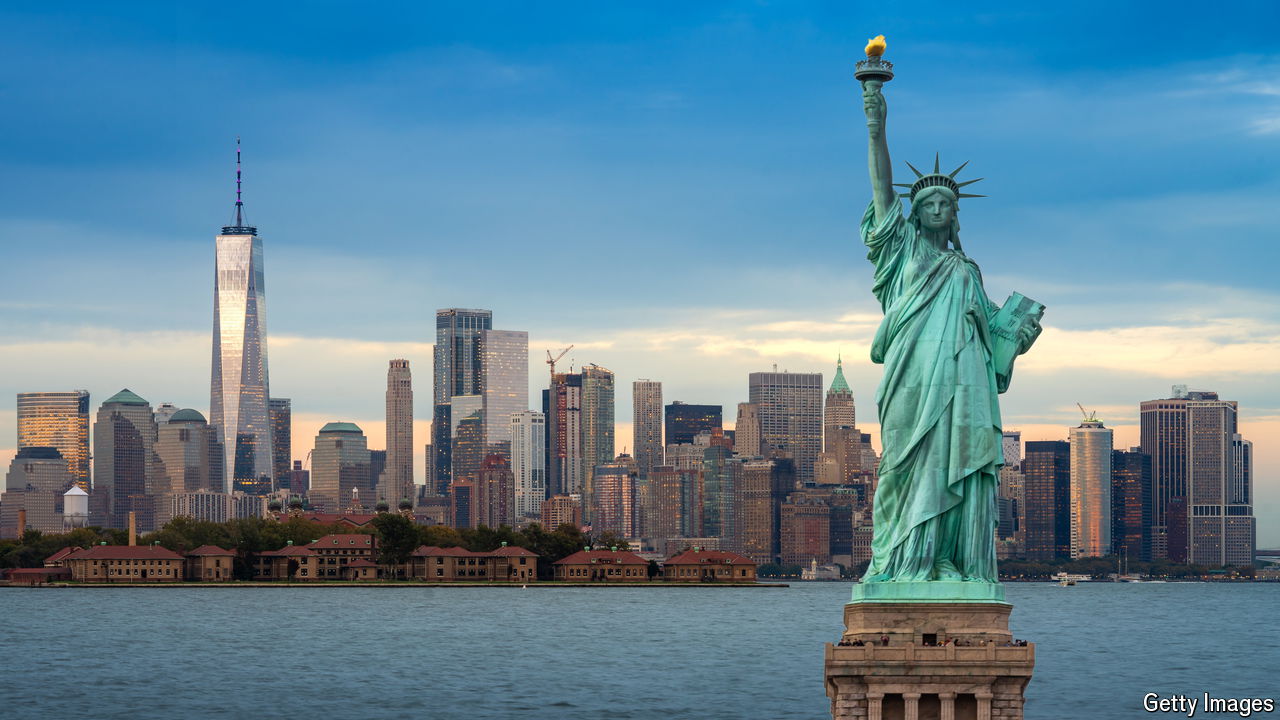Is anyone paying attention?
In summary, legal immigration to the United States has finally rebounded to pre-pandemic and even pre-Trump levels. However, the US system for processing immigrants still the same; bogged-down, bureaucratic, and difficult to navigate with many visas and greencard applications rejected.
However, as the article says “Americans do not share Congress’s allergy to reform” and appear to be open to reforming the system and do not disapprove of immigration overall.
It’s the Economist, so there is a paywall. See the article content below:
Republican politicians often compare America’s southern border to Swiss cheese. It is more like a black hole. Its gravitational pull is so strong that officials can think only of enforcement and security (or the good electoral politics that come with harping on about enforcement and security). The names of small, dusty border towns—Eagle Pass, Jacumba Hot Springs—have never been so well known. The black hole leaves little time to consider the other parts of America’s creaking immigration system, such as refugees, skilled-worker visas or reforming quotas that are decades out of date.
Republican politicians often compare America’s southern border to Swiss cheese. It is more like a black hole. Its gravitational pull is so strong that officials can think only of enforcement and security (or the good electoral politics that come with harping on about enforcement and security). The names of small, dusty border towns—Eagle Pass, Jacumba Hot Springs—have never been so well known. The black hole leaves little time to consider the other parts of America’s creaking immigration system, such as refugees, skilled-worker visas or reforming quotas that are decades out of date.
Yet it is worth looking at what is happening beyond the border. For even while the surge of irregular migration has soaked up attention and resources, legal immigration has rebounded. And on June 18th President Joe Biden announced new safeguards—including work permits and protection from deportation—for people who have been living illegally in the country for years but are married to American citizens. The move was crafted to appeal to, among others, Latino voters and to assuage progressives angered by Mr Biden’s crackdown on illegal migration in an executive action two weeks ago. At a stroke it also swells the ranks of the country’s legitimate residents by about 500,000 people. Two things combined to decrease legal immigration to the lowest level in decades during Donald Trump’s presidency: anti-immigrant policies and covid-19. Research from Giovanni Peri and Reem Zaiour, of the University of California, Davis, suggests that America’s foreign-born workforce began to shrink in 2019, before the pandemic. Between 2016 and 2020 America saw the longest continuous decline in new green cards issued since the 1990s. The number of refugees admitted annually tumbled to its lowest level in the resettlement programme’s history. Denial rates for skilled-worker visas rocketed. Later, the pandemic closed consulates abroad.
Liberty’s lure
Legal migration took time to recover: consulates reopened slowly, and visa backlogs were huge. But in 2024 it has returned to pre-pandemic, and indeed pre-Trump, levels. Nearly 1.2m green cards were issued in the fiscal year of 2023, a 68% increase from 2020 and slightly more than the number doled out during Mr Trump’s first year in office. The government is projected to resettle at least 90,000 refugees in 2024, potentially short of Mr Biden’s 125,000 allotment but far more than the 11,000 or so settled during the doldrums of the pandemic.
Non-immigrant visas, the kind that temporary workers and students get, have also made a comeback. This is good news for firms wanting to hire skilled workers. The h-1b lottery system, which allots visas to high-skilled, mostly tech, workers, was rife with fraud. Hundreds of thousands of applicants compete for just 85,000 spots, a number set by Congress in 2004. Sometimes dozens of applications were submitted on behalf of one person. A tweak to the lottery system is intended to fix that. Although more students are again coming to study in America, more than ever are also being denied visas. The same factors encouraging border crossings—a hot labour market, violence and instability at home, and a more welcoming president—may also be pushing young people abroad to seek their education in America. Cecilia Esterline of the Niskanen Centre, a think-tank, suggests that students may be failing to convince consulates that they will return to their home country after studying. What has all of this meant for the workforce? At its peak in 2021, the shortfall of foreign-born workers identified by Mr Peri and Ms Zaiour reached about 2m people. That hole has now disappeared, partly due to the number of people who streamed across the border and found work. But Mr Peri reckons the rebound has also been fuelled in part by the return of college-educated legal migrants. Some 45% of recent immigrants have a college degree, compared with 38% of native-born Americans and 33% of those who arrived in the 1990s.
One thing that hasn’t changed is the system itself. Congress has repeatedly failed to create new legal pathways for migrants, to increase caps for limited visas and to make the system more responsive to the needs of America’s economy. The result is a monumental backlog for green cards, long wait times at consulates, frustrated families who worry they will never be reunited, and irritated businesses and states eager for more labour. The process is next to impossible, says Mr Bier. “There are the people who are screwed, people who are really screwed, and then the people who are just going to die before they get a chance to come,” he adds, bleakly. Americans do not share Congress’s allergy to reform. They increasingly support more deportations and the border wall, but the desire for stricter enforcement has not yet shaken their approval of immigration overall. A majority of Democrats and a plurality of Republicans support more legal pathways. Some 61% of registered voters surveyed by Pew in April maintain that America’s openness to people from elsewhere is essential to its national character. But in an election year, with the black hole sucking up so much attention, reform of the legal system is unthinkable.


